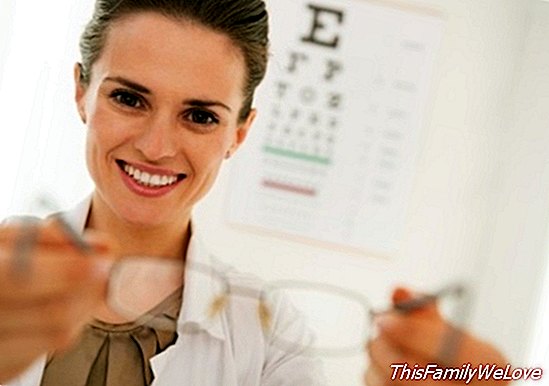Glasses or surgery for presbyopia

The presbyopia or sight tired, that appears from the 40 or 45 years, is not cured because it is part of the natural aging process, but it is corrected in all cases, by means of different techniques depending on the state of the eye's ocular health. patient. Currently, we have two treatment options to correct this visual defect: glasses or surgery for presbyopia or tired eyesight.
How to correct presbyopia or tired eyesight
The choice of one or another treatment for presbyopia will depend, to a large extent, on the state of health of the patient's eyes.
1. Lenses: We have different types of lenses:
- Conventional or monofocal lenses: correct the focus to see up close but, at the same time, blur objects that are at an intermediate or far distance. It is the most practical solution for people who do not have other visual problems added and who perform near view tasks for a long time.
- Bifocal lenses: they facilitate vision both near and far. In the lower part of the lens it focuses closely, and in the upper part, from far away. The alternating between both is possible, but they do not allow to see clearly the objects at intermediate distance and, although they have improved a lot, they remain unsightly.
- Progressive lenses, similar to bifocals but without the cut in the glass. Through the inclination of the head or gaze, we can vary the focus and allow us to see at any distance. They are more aesthetic but require an adaptation by the user
- Contact lenses that mimic progressive lenses.
2. Surgery: The results of the surgical intervention in presbyopia are not definitive because, as it is a problem of natural aging, over time the problem may reappear.
Currently the surgery techniques to correct presbyopia are:
- To be: Significantly improves the near vision and the intermediate vision. The technique is quite similar to the one used to correct myopia and allows us to maintain the combined vision that we have naturally, that is, although we do not realize it, with one of the eyes we focus more closely and with the other, from far.
- Intraocular lens: with this technique we replace the lens with an intraocular lens, which acts as an artificial lens and allows the patient to maintain near, middle and far vision, recovering a full range of vision, without the need to wear glasses.
Can presbyopia be prevented?
Being a consequence of the natural aging process of the human body, we are not facing a pathology that can be prevented. Yes, we can take care of our visual health to delay its aging or detect it at the beginning and treat it properly. For this, an ophthalmological review is essential, at least once a year, if there is no other associated pathology that requires a more adjusted follow-up.
Dr. Marta Suárez-Leoz. Ophthalmologist at the Hospital La Milagrosa, Madrid.




